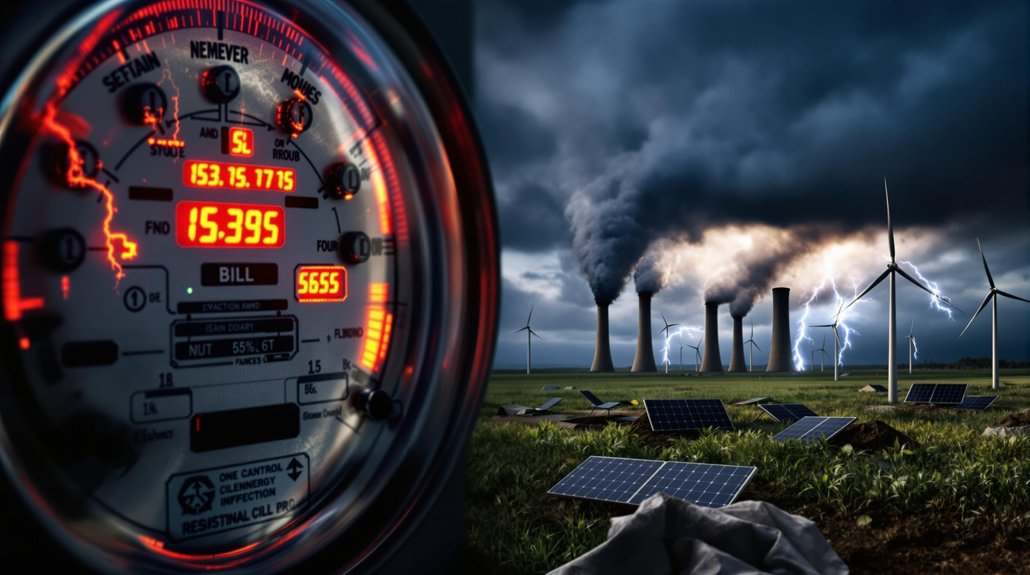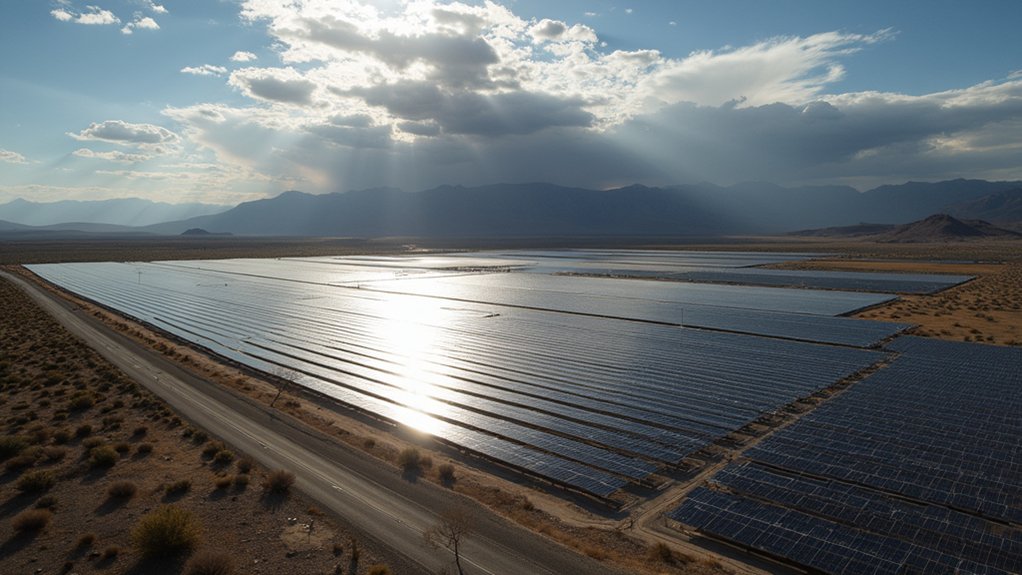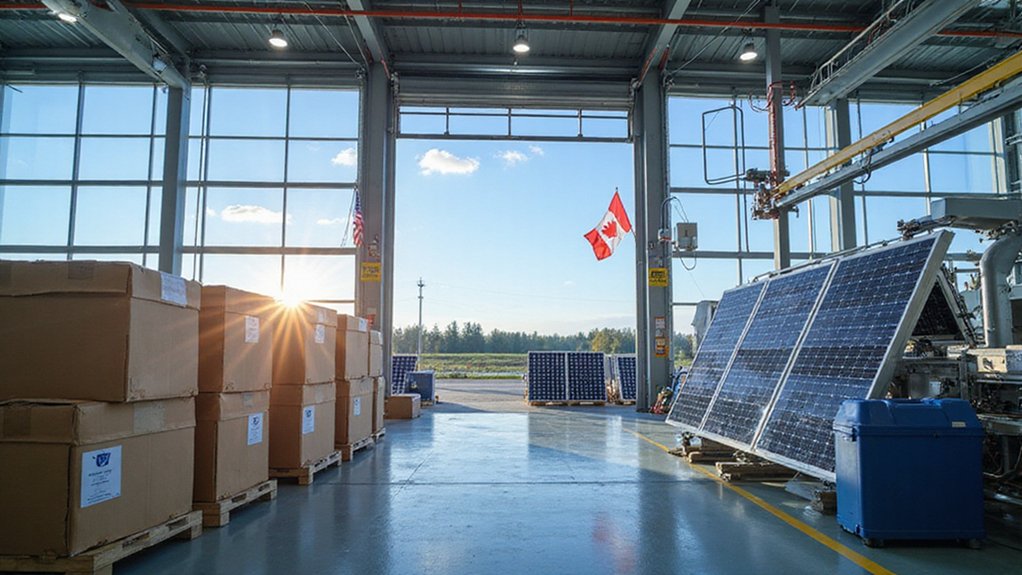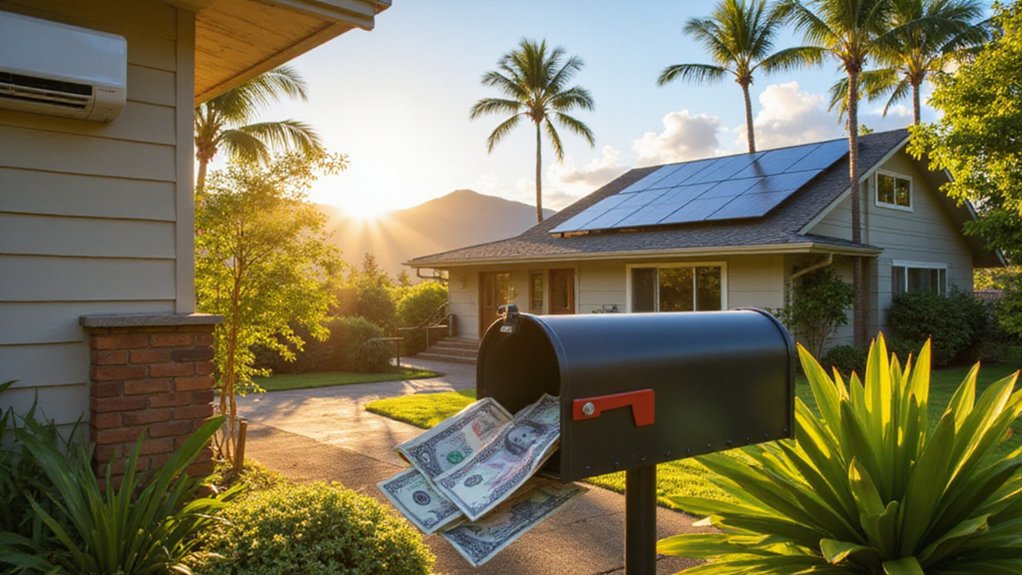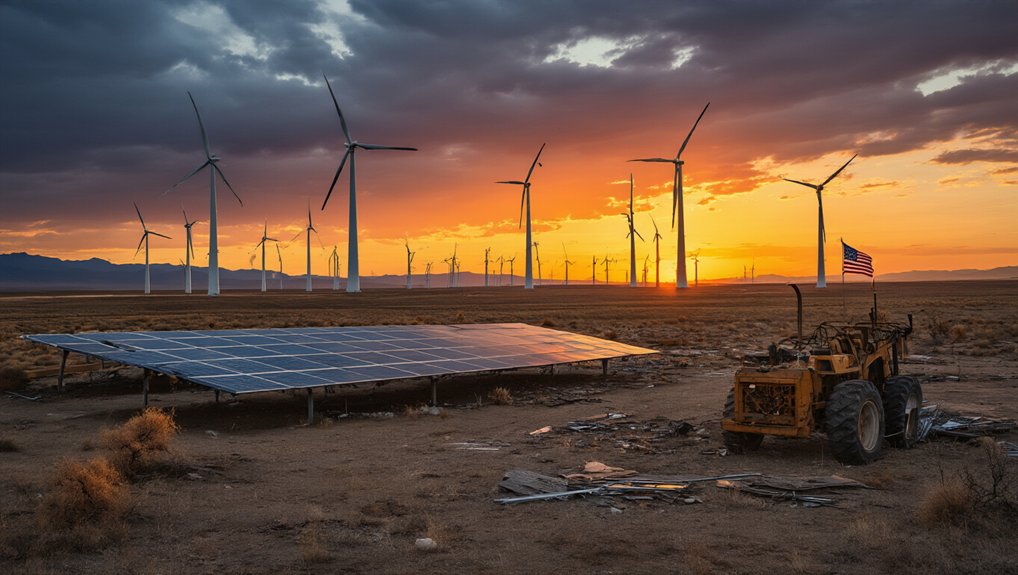Electric bills could surge if clean energy tax credits vanish. Studies project a 14% average increase by 2035, costing Americans $83 more annually. Some states face steeper hikes – Texans might see a shocking 22% jump. Jobs disappear too – roughly 97,000 of them. Critics argue subsidies distort markets, but renewable adoption clearly keeps costs down. The math isn’t complicated: lose these incentives, and your wallet takes the hit.
How much are you willing to pay for your electric bill in the future? It’s a question worth asking as researchers paint a grim picture of what happens if clean energy tax credits disappear. The numbers aren’t pretty. Power system costs could jump by 14%. That’s not a typo.
For the average American, this translates to about $83 more per year by 2035. Some unlucky folks will get hit even harder – up to $152 annually in certain states. Monthly bills? Expect them to rise by around 10%. Texans, brace yourselves for a potential 22% increase. Yeah, everything’s bigger in Texas – including energy bill hikes, apparently.
The economic fallout extends beyond your wallet. We’re talking $336 billion less investment in clean energy by 2040. That’s real money that won’t flow into the economy. The nation will see 237 GW less clean energy capacity built. Translation: dirtier energy and fewer options. U.S. electricity demand is projected to increase by 30% over decades, making clean energy deployment even more critical. Critics argue that federal subsidies for renewables create market distortions affecting baseload power generation capacity.
Jobs? Gone. About 97,000 net jobs vanish. The broader economic hit reaches $820 billion, with 3.8 million job-years evaporating. That’s a lot of paychecks that won’t be cashed.
State impacts vary wildly. New Yorkers might pay $39 more monthly. Texans, $29. Minnesotans, $22. Oklahoma could lose investments worth over 8% of its entire 2023 GDP. Ouch.
Here’s the kicker: states embracing wind and solar have often seen slower rate increases. Iowa gets 60% of its electricity from wind, and rates rose slower than inflation. Texas saved $31.5 billion in wholesale costs thanks to renewables.
Why are rates climbing anyway? Fossil fuel costs are volatile. Industrial demand is growing. Infrastructure needs updating. Extreme weather demands more capacity. And wildfires aren’t helping.
The federal tax credits could reduce solar installation costs by 30%, making renewable energy more accessible for homeowners looking to escape rising utility bills. Meanwhile, utilities pursue “all of the above” strategies without prioritizing affordability. They’re seeking record rate increases while fighting energy efficiency programs. Funny how that works, isn’t it?
The solution? Better regulation, transparency, and balanced policies. Otherwise, get ready for your wallet to feel the burn.
